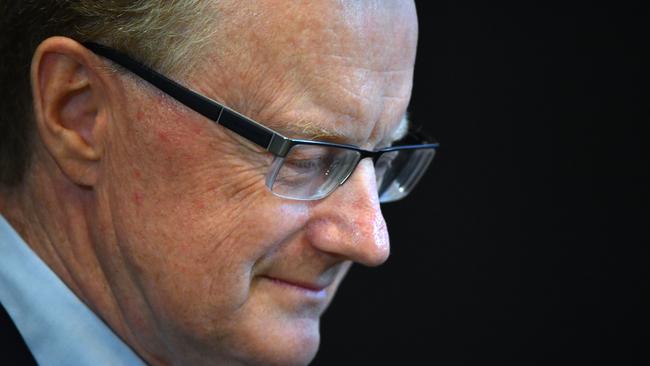
It doesn’t come from a local housing consultant bashing out daily reports on the strength of the house price recovery, rather it is gleaned from the so-called “bank-of-banks” - the Bank of International Settlements, in Switzerland.
The figure is the debt servicing ratio for households and right now, Australia’s national “number” is running way too high - it is almost twice the level of comparable “advanced” economies, such as the US, Europe and Japan.
READ MORE: Safe bet QE top of mind for RBA this summer | Reserve Bank keeps cash rate on hold
Worse still, as NAB’s economics team puts it, the figure is “near its 2008 peak”.
Back in 2008, the country was in the middle of the global financial crisis (GFC) and the ability of Australians to repay their mortgage was running at a ratio of 17.5.
Today, 11 years later, the number has drifted back up to 15.6.
But here’s the thing. Back in 2008, the stress among householders was coming from dealing with official Reserve Bank of Australia cash rates of 7.25 per cent.
Today, those rates are a fraction of the level of that time - we are operating on rates that are around a 10th of the 2008 level at 0.75 per cent.

We hear all the time about our record-breaking levels of household debt and we hear, too, that all is well because rates are low and many are able to pay back ahead of time.
But while we have been looking the other way, the absolute level of debt has been mushrooming - the globally recognised ratio which measures the ability to service that debt is ringing a bell.
What on earth will happen if - and when - rates recover to long-term average levels between 5 and 7 per cent?
NAB market economist Kieran Davies has noted the number in a recent report.
He suggests: “New loans have picked up (and the BIS did not capture some of the more recent rate cuts) but weak incomes and already high levels of debt could constrain further borrowing. This is brought home by the fact that despite the lowest mortgage rates since the 1950s, the debt servicing ratio is near its 2008 peak.”
Mr Davies said the latest reading on the Australia rate at 15.6 compared to a median ratio around the world of 7.8.
Curiously another GFC parallel is the paltry growth in household mortgages, totalling just 4 per cent over the last year.
As Mr Davies explains, this is extremely slow by modern standards, beaten only by the 3 per cent low after the GFC and the post-World War Two low of 2 per cent in the 1990s recession.
If this is not a concern, what is?
For banks, the concern is that households will just not be able to borrow much more, regardless of the direction of house prices.
For householders it is another matter altogether.
Moreover, the ratio has to be set against a recent - though yet to be tested - uptick in house prices.
Set against miserable growth in household income, higher house prices or higher unemployment will strain the ability of households to pay even low rate mortgages even further.




It must rank as one of the scariest numbers in the housing market, yet it’s rarely mentioned.